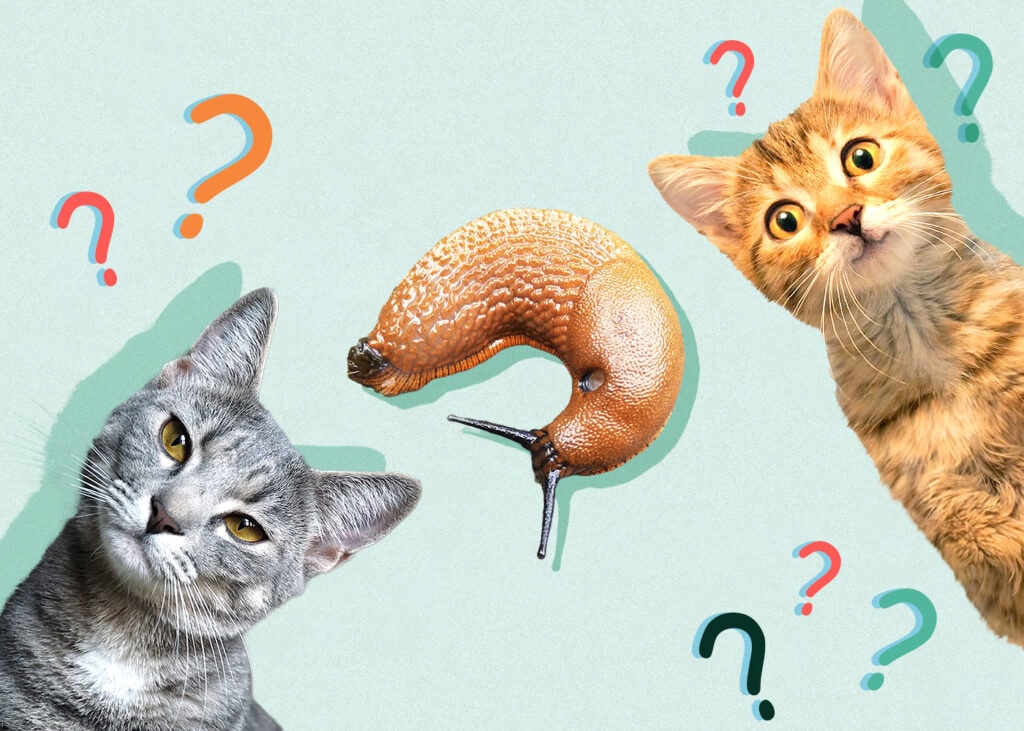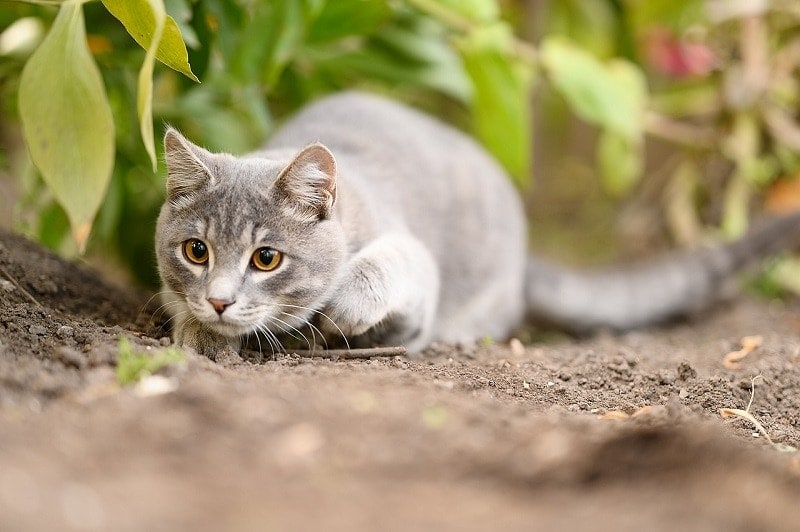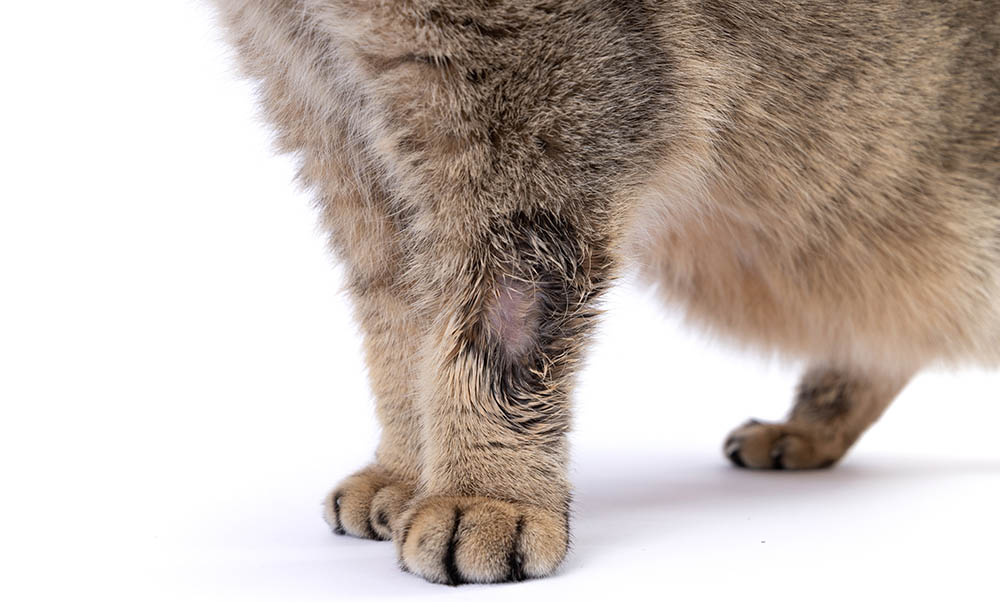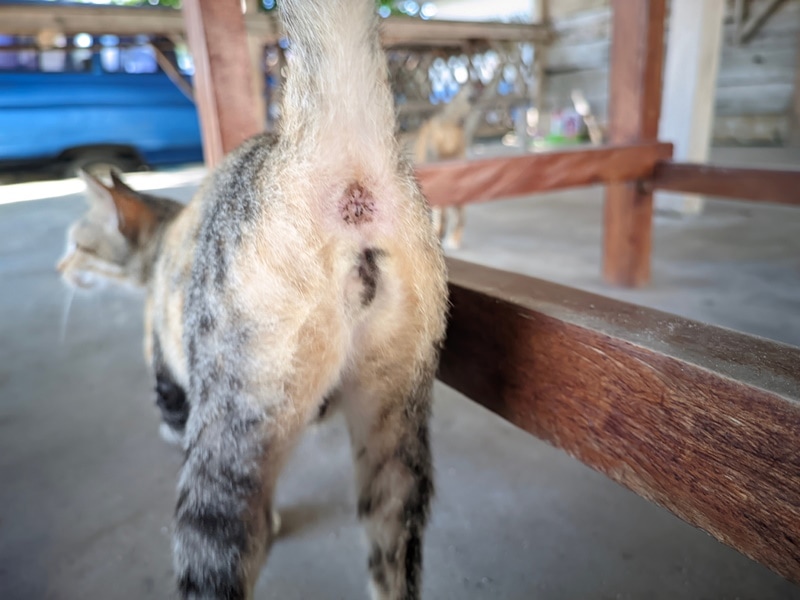Can Cats Eat Slugs? Nutrition Facts & Safety Guide

Updated on

Sticky, slimy, and gross—we’d think cats would want to stay away from slugs! But your cat might be a more adventurous eater than you think. In fact, eating slugs and snails is pretty normal behavior for cats. Your cat’s garden snacking won’t be a problem most of the time. But slug-eating is still something to watch out for—slugs may have ingested pesticides such as weed killer or slug baits. If your cat eats a slug that carries pesticide or slug bait, it may cause side effects. Of more concern in many parts of the world is that slugs and snails can carry a parasite that develops into lungworm. Lungworms,1 of which there are several species, infect the respiratory system of cats and can cause bronchitis and pneumonia.
Why Cats Get the Munchies
If your cat is always interested in small bugs and animals, it can get frustrating. After all, cats can have healthy, balanced foods and enriching toys available and still go after bugs. The truth is that cats are hardwired to hunt small animals. Small creatures like snails and slugs will catch a cat’s eye, and their movements will be a source of fascination to cats.
Slugs and snails are easy prey compared to birds and rodents, so many cats that are otherwise poor hunters can catch them without any trouble. Cats might eat their catch right away or spend time pawing and batting at the slug. They might also pick up a slug and take it inside. If your cat likes to bring you creepy crawlies, they’re trying to show affection and care.

Slugs, Pellets, and Pesticide Poisoning
Typically, slugs are an infrequent source of food for cats. Your common garden slug doesn’t excrete any poison so is not toxic. A few exotic types of slugs are more dangerous, but you won’t be finding those in a typical backyard. But today, slugs can indirectly cause trouble for your cat.
Many people use slug baits and poisons to protect their precious garden plants from slugs. These pellets contain a mix of bait and poison such as iron phosphate, metaldehyde, or other poisons. These pellets may take several days to cause death in a slug—during that time, the slug might also be a danger to cats.
Slugs may also cause poisoning from general pesticides, such as weed killers or insecticides. When slugs eat plant matter, they also ingest anything on the plant. These pesticides can be very dangerous to cats, and the source of ingestion isn’t apparent. More usually however, direct exposure to the pesticide would be of more concern.
Do Cats Eat Slug Pellets?
These pellets are designed to be appetizing to slugs, not cats, so most cats ignore them. However, some curious cats are known to eat slug pellets when investigating the garden or packet. If your cat has eaten slug pellets, consult a veterinarian immediately.

When Should I Seek Medical Help?
If your cat eats a slug, don’t panic. Most slugs won’t contain poisons in high enough concentrations to be a danger. Remove your cat from the situation and move them to a safe place where you can monitor for signs of poisoning. Contact your veterinarian and ask if lungworm is a concern in your area and if preventative measures are recommended if your cat eats slugs and snails.
If you think your cat is showing signs of pesticide or slug bait poisoning, it’s crucial to speak to a vet quickly. Some signs of poisoning include fever, vomiting, diarrhea, seizures, tremors, hypersalivation, increased heart rate, dilated pupils and difficulty moving. If possible, be familiar with the chemicals used in your household so that you can help your veterinarian diagnose the source of the poisoning quickly.
Discouraging Slug Eating
It can be hard to prevent your cat from eating slugs, snails, and insects. The only way to be certain your cat isn’t catching garden critters is to keep them inside. If your cat has a history of poisoning, this might be the safest option. Keeping your cat inside except when supervised can be tricky, but it will prevent many kinds of danger.
If keeping your cat inside isn’t what you or they would like, there are a few changes you can make to keep your cat a little safer. Avoid using pesticides or weed killers that might be harmful to your cat. Some natural methods can be used to discourage slugs without posing risk to your kitty, like adding crushed egg shells or copper strips around your garden beds and hand picking of slugs.
Some cats also go garden hunting because of a lack of variety and stimulation. Adding some variety to your cat’s diet can lower their desire to hunt. Mental stimulation is important as well. A variety of cat toys will keep your cat interested and engaged at home. Not all cats stop hunting when given a better variety of toys, but some do.
Now that you know what you can safely feed your cat, it’s just as important to find a bowl that supports their health and well-being. With whisker-friendly bowls and a wide tray to catch any spills, our Hepper NomNom Cat Bowl is our favorite option.
Final Thoughts
Chasing after snails and slugs is a gamble for your cat. Some are perfectly safe, but in some cases, slugs might contain enough pesticides to sicken a cat or they may be exposed to lungworm infection. So next time your cat’s getting cravings for escargot, maybe redirect them to a safer treat.
Related Reads:
Featured Image Credit: GAIMARD, Pixabay














